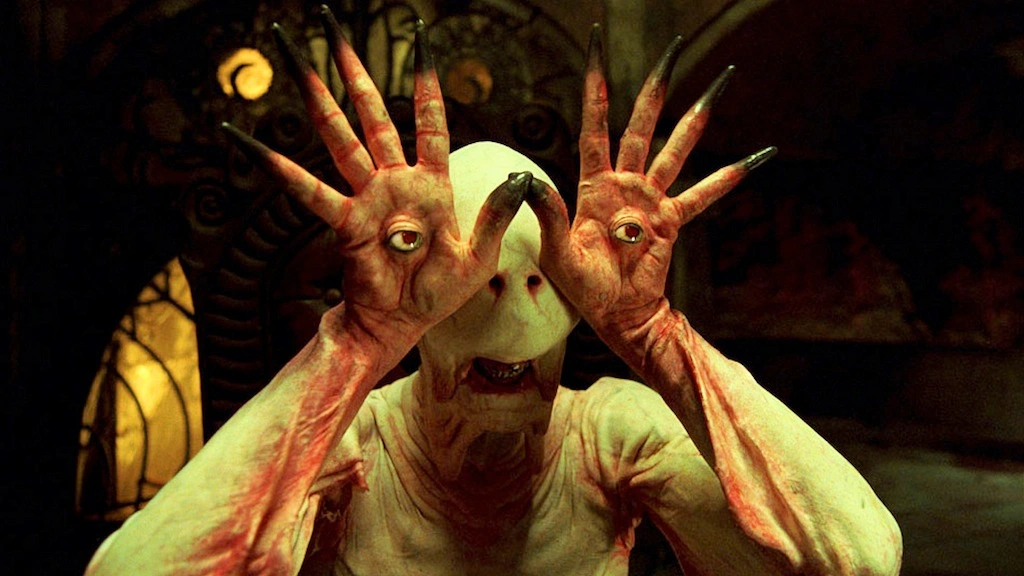
Creativity heals trauma and accesses our religious functions
In the first session when I give patients my initial observations they often have difficulty hearing what I mean regarding their emotional experience.
I hear things like:
“I’m not angry because I’ve also done bad things to people and everyone makes mistakes.”
“I’m not sad because I know it happened for the greater good.”
“I’m not afraid because I know that it can’t hurt me.”
These statements are not attempts to feel emotion, they are attempts to turn emotion off. These statements are attempts to solve and emotional reality with intellect. They are using the wrong part of the brain for the wrong part of life.
People have a hard time accepting that they can feel that something is true even though they may know intellectually that something is not true. Clear as mud?
Stay with me for a second here.
We can be sad when friends let us down even though we know intellectually that humans make mistakes. We can be afraid of a story or an archetypal image even though we know that it is not real. We can be angry at realities of life even though we know they are inevitable and true.

Scared?
Intellect and emotion often contradict each other. We tell ourselves that our intellect can turn our emotions off, but our intellect can only let us ignore our emotional reality temporarily. Both of these experiences come from two different parts of the brain that process two different kinds of realities. Our ego and cognition comes from the prefrontal cortex, the newest part of the brain. This upstart new part thinks that it is all of us. We pretend that we are purely rational creatures until emotion overwhelms us and we try to tamp it down again.
Our intuition, emotion, and creative elements come from the oldest part of the brain, the subcortex. When indulged our subcortical brain allows us to feel intuitive gut feelings, creatively heal problems, and listen to our emotional reality. It is also the gateway to religious and transcendental experiences.
The subcortical brain stores information that activates our emotional fight or flight center. To do this it has to store information about the past that our conscious brain may not have time to think about intellectually. The subcortical brain is fast, so lightening fast that we do not always notice consciously what it is doing. The prefrontal cortex brain is slower but more deliberate in how it processes information. The subcortical brain raises our adrenaline and makes us cautious after the red hot coil of a stove. The unconscious subcortical brain associates this image with trauma from the past. It raises the alarm before our conscious brain knows what is happening.
The subcortical brain reacts to stimulus from our past. This becomes a problem when emotional pain and trauma are stored there. Feelings of inadequacy, hopelessness and rage can get stuck “under” our life until we acknowledge and process them in therapy. A therapist encouraging you to feel, eye movement therapy, prayer, transcendental meditation, intentional creative practice, or psychedelics can unlock the door to this part of the brain. This part of the brain can be a scary place though if we have trauma blocking the way down. Trying to feel emotion, creativity or intuition may make trauma overwhelm us if it is not healed.
Edward Edinger points out in his book Ego and Archetype that these parts of the brain do not want to be in the same head. They often disagree and fight one another. The prefrontal cortex is extremely existential and see’s the world through cold reason. Over-indulged the prefrontal cortex would have us fixate on our own ultimate unimportance. From its perspective we are a bubble on a tide of empire or a meaningless dot in a vast galaxy. Our existential and intellectual brain doesn’t understand emotion or mystical religion. It only understands practical accomplishment and objective material realities.
The subcortical brain is myopic and childish. It contains the zen perspective that “all things are one” or that “we are connected to all things”. The subcortical brain contains past emotional information. It also contains information from our shared evolutionary heritage. This spiritual function of the subcortical brain can help us access wisdom and creativity that feel “older than us” and “timeless” or “connected”. In conditions where subcortical emotional reality overwhelms the ego and rational brain we can become psychotic or depersonalized.
Much of psychological dysfunction occurs when we try to use the wrong part of the brain to create change in our current reality. We have all been people who become overly intellectual when feeling emotion instead of confronting the emotional reality. “Magical thinking” often occurs when people feel like their emotion or insight will change the outcome of their existential reality. Some people retreat into religion instead of taking practical steps to solve their problems. Others might despise religion because they see no point in any part of life that is not objective and rational
Edinger calls these two dueling functions the Ego / Self Axis. Edinger see’s the development of both functions as the key to an intact and stable psyche.
“The Self is the ordering and unifying center of the total psyche (conscious and unconscious) just as the ego is the center of the conscious personality. Or, put in other words, the ego is the seat of subjective identity while the Self is the seat of objective identity. The Self is thus the supreme psychic authority and subordinates the ego to it. The Self is most simply described as the inner empirical deity and is identical with the imago Dei.”
― Edward F. Edinger, Ego and Archetyp
e: Individuation and the Religious Function of the Psyche

Often people retreat too deeply into one function. These people often distrust one another. Mystics and existentialists rarely get along. They have repressed one part of the human experience in themselves and avoid it in other people. Understanding the reality of the ego self axis can let us have a happy and whole life. The ego, or the prefrontal cortex, can make us effective at planning and accomplishment. The Self, or subcortical brain, can let us heal trauma, create, and develop a transpersonal spiritual dimension.
Neither part of the brain is “bad” or “wrong”. We need both to understand our humanity. In order to heal and understand religious and political differences we need to embrace Edinger’s lens and use it to hear what people are really saying.
Both parts of the brain are “right” from their own point of view. At our deepest levels we are alone and cannot be totally understood. From another perspective we are a part of a human experience that connects all of us. The ego brain knows that we are born and die alone, but the self brain can feel the archetypes in our evolutionary heritage.
We are each existentially alone, but it is the knowledge that we are all existentially alone that can bring us together and allow us to understand one another.
For more info on the subcortical brain check out our other article: https://gettherapybirmingham.com/post-therapy-spirituality-and-mysticism/
Waiting
by Robert Penn Warren
You will have to wait. Until it. Until The last owl hoot has quavered to a
Vibrant silence and you realize thre is no breathing Beside you, and dark curdles toward dawn. Until
Drouth breaks, too late to save the corn, But not too late for flood, and the dog-fox, stranded
On a sudden islet, barks in hysteria in the alder-brake.
Until the doctor enters the waiting room, and His expression betrays all, and you wish He’d take his God-damned hand off your shoulder. Until
The woman you have lived with all the years Says, without rancor, that life is the way life is, and she
Had never loved you, had believed the lie only for the sake of the children.
Until you become uncertain of French irregular verbs And by a strange coincidence begin to take Catholic instruction from Monsignor O’Malley, who chews a hangnail. Until
You realize, truly, that our Saviour died for us all, And as tears gather in your eyes, you burst out laughing,
For the joke is certainly on Him, considering What we are. Until
You pick the last alibi off, like a scab, and Admire the inwardness, as beautiful as inflamed flesh
Or summer sunrise. Until you
Remember, surprisingly, that common men have done good deeds. Until it
Grows on that, at least, God
Has allowed us the grandeur of certain utterances.
Bibliography:
Edinger, E. F. (1972). Ego and Archetype: Individuation and the Religious Function of the Psyche. Shambhala Publications.
Warren, R. P. (1958). Waiting. The collected poems of Robert Penn Warren. Random House.
Continued Reading List:
- Siegel, D. J. (2010). Mindsight: The New Science of Personal Transformation. Bantam.
- Panksepp, J. (1998). Affective Neuroscience: The Foundations of Human and Animal Emotions. Oxford University Press.
- Damasio, A. (1999). The Feeling of What Happens: Body and Emotion in the Making of Consciousness. Harcourt Brace.
- Van der Kolk, B. (2014). The Body Keeps the Score: Brain, Mind, and Body in the Healing of Trauma. Penguin Books.
- Ogden, P., Minton, K., & Pain, C. (2006). Trauma and the Body: A Sensorimotor Approach to Psychotherapy. W. W. Norton & Company.
- Schore, A. N. (2003). Affect Regulation and the Repair of the Self. W. W. Norton & Company.
- Levine, P. A. (2010). In an Unspoken Voice: How the Body Releases Trauma and Restores Goodness. North Atlantic Books.
- Wilber, K. (2000). Integral Psychology: Consciousness, Spirit, Psychology, Therapy. Shambhala.
- Jung, C. G. (1959). The Archetypes and the Collective Unconscious. Bollingen.
- Bohm, D. (1980). Wholeness and the Implicate Order. Routledge.


























0 Comments